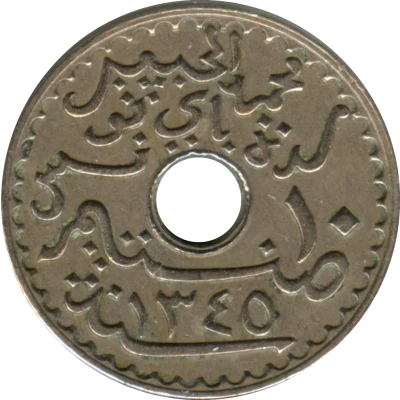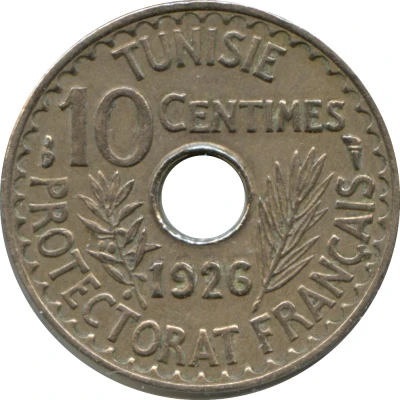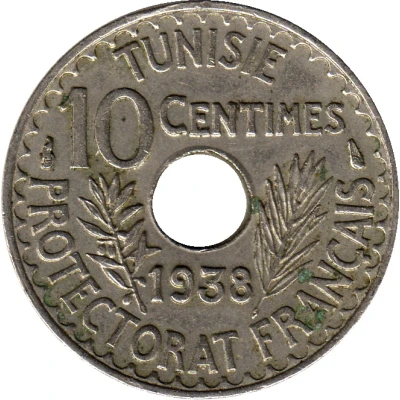


© CGB
10 Centimes - Ahmad II Essai
1350 (1931) year| Nickel brass | 4.05 g | 21 mm |
| Issuer | Tunisia |
|---|---|
| Ruling authority | Ahmad II (1929-1942) |
| Type | Pattern |
| Year | 1350 (1931) |
| Calendar | Islamic (Hijri) |
| Value | 10 Centimes (0.10 TNF) |
| Currency | Franc (1891-1957) |
| Composition | Nickel brass |
| Weight | 4.05 g |
| Diameter | 21 mm |
| Thickness | 1.76 mm |
| Shape | Round with a round hole |
| Technique | Milled |
| Orientation | Coin alignment ↑↓ |
| Demonetized | Yes |
| Updated | 2024-10-08 |
| Numista | N#112613 |
|---|---|
| Rarity index | 97% |
Reverse
Tunisia in French and value
Script: Latin
Lettering:
TUNISIE
10 CENTIMES
1931
ESSAI
PROTECTORAT FRANÇAIS
Translation:
Tunisia
10 Centimes
1931
Essai
French Protectorate
Engraver: Patey
Edge
Plain
Comment
Essai of KM#259Interesting fact
One interesting fact about the Pattern 10 Centimes - Ahmad II (Essai) 1350 (1931) from Tunisia is that it features a unique blend of Arabic and European design elements. The obverse side of the coin depicts a portrait of Ahmad II, the Bey of Tunis, wearing a fez and a cloak, while the reverse side features a stylized representation of a palm tree, a common motif in Islamic art, surrounded by the coin's denomination and date in Arabic script. This blending of styles reflects the cultural influences of Tunisia's history as a crossroads of civilizations.



